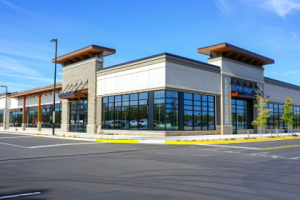Commercial Property Marketplace: A Look into Future Market Predictions
Introduction: Understanding the Commercial Property Marketplace
The commercial property marketplace is a dynamic and ever-evolving sector that plays a crucial role in the global economy. It encompasses a wide range of properties, including office buildings, retail spaces, industrial warehouses, and hotels, among others. These properties are primarily used for business purposes, such as leasing or selling to companies for their operations.
Commercial real estate is a significant asset class that attracts investors, developers, and businesses alike. It offers opportunities for capital appreciation, rental income, and diversification of investment portfolios. Understanding the commercial property marketplace requires a deep dive into its current trends, analysis, and future market predictions.
Current Trends and Analysis in the Commercial Property Market
The commercial property market has experienced several notable trends and shifts in recent years. One of the key trends is the rise of flexible workspaces, driven by the growing demand for co-working spaces and the changing nature of work. This trend has been fueled by the rise of startups, freelancers, and remote workers who seek flexible and collaborative work environments.
Another significant trend is the increasing focus on sustainability and green buildings. With growing concerns about climate change and environmental impact, commercial property developers and investors are prioritizing energy-efficient buildings and sustainable practices. This trend is not only driven by environmental consciousness but also by the potential cost savings associated with energy-efficient buildings.
Furthermore, the retail sector has undergone a transformation due to the rise of e-commerce. Traditional brick-and-mortar retailers are facing challenges as consumers increasingly turn to online shopping. This has led to a shift in demand for commercial properties, with a greater emphasis on last-mile distribution centers and fulfillment centers to support the e-commerce boom.
Future Market Predictions: What to Expect in the Commercial Property Marketplace
Looking ahead, the commercial property marketplace is expected to continue evolving in response to various factors. One prediction is the continued growth of flexible workspaces. As more companies embrace remote work and flexible arrangements, the demand for co-working spaces and serviced offices is likely to increase. This trend presents opportunities for investors and developers to cater to the changing needs of the workforce.
Additionally, the commercial property market is expected to witness increased investment in technology and smart buildings. Advancements in technology, such as the Internet of Things (IoT) and artificial intelligence (AI), are transforming the way buildings are managed and operated. Smart buildings offer benefits such as energy efficiency, improved security, and enhanced tenant experience, making them an attractive investment option.
Another prediction is the continued focus on sustainability and green buildings. Governments and organizations worldwide are setting ambitious targets to reduce carbon emissions and promote sustainable practices. This will drive the demand for commercial properties that meet stringent environmental standards, such as LEED (Leadership in Energy and Environmental Design) certification. Investors and developers who prioritize sustainability will be well-positioned to capitalize on this growing market segment.
Key Factors Influencing the Future of the Commercial Property Market
Several key factors will shape the future of the commercial property market. One of these factors is demographic changes. The aging population in many countries will drive demand for healthcare facilities, retirement homes, and assisted living centers. On the other hand, the younger generation’s preferences for urban living and experiences will continue to drive demand for mixed-use developments and vibrant city centers.
Economic factors also play a significant role in the commercial property market. Interest rates, inflation, and economic growth impact investor sentiment and the availability of financing. A strong economy generally leads to increased demand for commercial properties, while economic downturns can result in reduced investment and leasing activity.
Government policies and regulations are another crucial factor influencing the commercial property market. Changes in zoning laws, tax incentives, and environmental regulations can have a significant impact on property values and investment decisions. Investors and developers need to stay informed about these policies to navigate the market effectively.
In conclusion, the commercial property marketplace is a dynamic sector that is influenced by various trends, analysis, and predictions. The rise of flexible workspaces, sustainability, and e-commerce are among the current trends shaping the market. Looking ahead, the market is expected to witness continued growth in flexible workspaces, increased investment in technology and sustainability, and demographic changes. Understanding the key factors influencing the market, such as demographics, economic conditions, and government policies, is crucial for investors and developers to make informed decisions in this ever-evolving sector.





